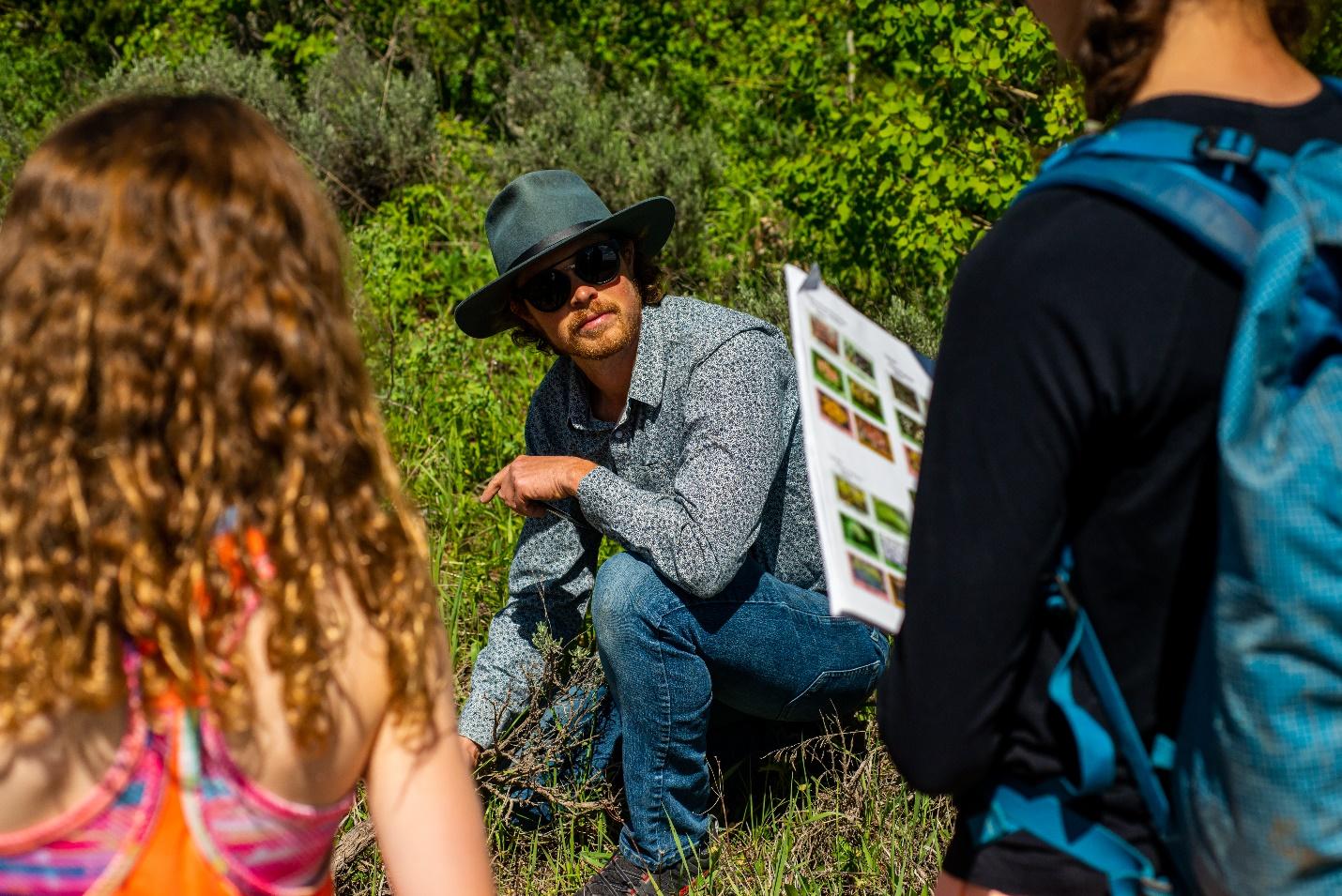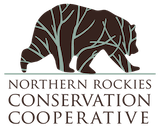
For Everything There Was A Season: Phenology Shifts in the Tetons
Research Associates: Trevor Bloom and Corinna Riginos
Project Partners: Donal O’Leary
Project overview: Using Dr. Frank Craighead Jr’s historical phenology observations of the Tetons, Bloom, O’Leary and Riginos are researching how climate change is impacting the seasonal timing of ecological events in Grand Teton National Park.
Backstory: Around the world, phenology — or the timing of ecological events — is shifting as the climate warms. This can lead to a variety of consequences for individual species and for ecological communities as a whole, most notably through asynchronies that can develop between plants and animals that depend upon each other. Within the Greater Yellowstone Ecosystem and Grand Teton National Park, there is as yet little understanding of how climate change is affecting plant and animal phenology.
Researchers Trevor Bloom, Donal O’Leary, and Corinna Riginos are building on the observations of local biologist and writer, Dr. Frank Craighead Jr., to answer these questions. In the 1970’s, Craighead intimately studied the timing of natural events outside his home in Moose, WY, and used his observations to write the amazing book For Everything There is a Season: The Sequence of Natural Events in the Grand Teton-Yellowstone Region.

Late biologist Frank Craighead recorded hundreds of observations on the seasonal timing of ecological events to write the book For Everything There was a Season. Nearly 50 years later, NRCC research associates are retracing his footsteps. Notes and photo courtesy of Charlie Craighead.
Nearly fifty years later, NRCC researchers are following in Craighead’s footsteps. Increased spring temperatures have shifted the flowering times for most species between the 1970s and the 2010s. Researchers observed the largest change in phenology in early spring flowers, which as a group bloomed on average 17 days earlier, and as much as 36 days earlier. Mid-summer flowers bloomed on average 10 days earlier, nonnative species 15 days earlier, and berry-producing shrubs 5 days earlier, while late summer flowering plants did not shift.
Despite the earlier flowering times, the seasonal behavior of many animals (based on day-length rather than climatic cues) has remained the same. This can cause tremendous mismatches in ecological timing. How will bears react when berries peak in the summer, rather than in the fall, when they need them as a food source before entering hibernation? How will hummingbirds feed nectar to their young when the flowers bloom weeks too early? This project seeks to investigate these questions in order to help managers plan conservation efforts and is working directly with Grand Teton National Park to better inform restoration efforts at Antelope Flats.
Current Status: Bloom, O’Leary and Riginos are in the process of publishing the results from the first four years of the study. This will be publicly shared upon acceptance for publication. The most up to date report is available here in the University of Wyoming/National Park Service Research Station Annual Report Vol. 42 (2019).
Outreach and Education:
In addition to the scientific research, NRCC associates have created a successful citizen science project to engage local community members, volunteers, schools, and other conservation directly in this work through Wildflower Watch. Wildflower Watch is now in its fourth year and has engaged over 700 volunteers to make nearly 8,000 observations on the phenology or seasonal timing of common wildflowers in Grand Teton National Park. The data collected is uploaded to the USA National Phenological Network and informs local and regional models.
Wildflower Watch and the work by NRCC associates inspired the permanent mural by Katie Ann Fox displayed on the side of Trio restaurant in downtown Jackson Hole, sponsored by Jackson Hole Public Art.

Artist Katy Ann Fox paints mural inspired by Wildflower Watch in downtown Jackson. Photo credit: Ryan Dorgan.
NRCC research associates Trevor Bloom and Corinna Riginos believer there is no better way to make climate change and its effects real to people than to give them opportunities to see for themselves the changes that are occurring in our ecosystem. If you are interested in learning more, or you’d like to volunteer for Wildflower Watch, please email trevor@nrccooperative.org.
Partners: The Nature Conservancy, Grand Teton National Park, USA National Phenological Network
Project start year: 2016
Location: Grand Teton National Park and the Greater Yellowstone Ecosystem
in touch today and start making the difference.
As long as poverty, injustice & inequality persist, none of us can truly rest. It doesn’t take much to change a life, Get in touch today and start making the difference.

For Everything There Was A Season: Phenology Shifts in the Tetons
Research Associates: Trevor Bloom and Corinna Riginos
Project Partners: Donal O’Leary
Project overview: Using Dr. Frank Craighead Jr’s historical phenology observations of the Tetons, Bloom, O’Leary and Riginos are researching how climate change is impacting the seasonal timing of ecological events in Grand Teton National Park.
Backstory: Around the world, phenology — or the timing of ecological events — is shifting as the climate warms. This can lead to a variety of consequences for individual species and for ecological communities as a whole, most notably through asynchronies that can develop between plants and animals that depend upon each other. Within the Greater Yellowstone Ecosystem and Grand Teton National Park, there is as yet little understanding of how climate change is affecting plant and animal phenology.
Researchers Trevor Bloom, Donal O’Leary, and Corinna Riginos are building on the observations of local biologist and writer, Dr. Frank Craighead Jr., to answer these questions. In the 1970’s, Craighead intimately studied the timing of natural events outside his home in Moose, WY, and used his observations to write the amazing book For Everything There is a Season: The Sequence of Natural Events in the Grand Teton-Yellowstone Region.

Late biologist Frank Craighead recorded hundreds of observations on the seasonal timing of ecological events to write the book For Everything There was a Season. Nearly 50 years later, NRCC research associates are retracing his footsteps. Notes and photo courtesy of Charlie Craighead.
Nearly fifty years later, NRCC researchers are following in Craighead’s footsteps. Increased spring temperatures have shifted the flowering times for most species between the 1970s and the 2010s. Researchers observed the largest change in phenology in early spring flowers, which as a group bloomed on average 17 days earlier, and as much as 36 days earlier. Mid-summer flowers bloomed on average 10 days earlier, nonnative species 15 days earlier, and berry-producing shrubs 5 days earlier, while late summer flowering plants did not shift.
Despite the earlier flowering times, the seasonal behavior of many animals (based on day-length rather than climatic cues) has remained the same. This can cause tremendous mismatches in ecological timing. How will bears react when berries peak in the summer, rather than in the fall, when they need them as a food source before entering hibernation? How will hummingbirds feed nectar to their young when the flowers bloom weeks too early? This project seeks to investigate these questions in order to help managers plan conservation efforts and is working directly with Grand Teton National Park to better inform restoration efforts at Antelope Flats.
Current Status: Bloom, O’Leary and Riginos are in the process of publishing the results from the first four years of the study. This will be publicly shared upon acceptance for publication. The most up to date report is available here in the University of Wyoming/National Park Service Research Station Annual Report Vol. 42 (2019).
Outreach and Education:
In addition to the scientific research, NRCC associates have created a successful citizen science project to engage local community members, volunteers, schools, and other conservation directly in this work through Wildflower Watch. Wildflower Watch is now in its fourth year and has engaged over 700 volunteers to make nearly 8,000 observations on the phenology or seasonal timing of common wildflowers in Grand Teton National Park. The data collected is uploaded to the USA National Phenological Network and informs local and regional models.
Wildflower Watch and the work by NRCC associates inspired the permanent mural by Katie Ann Fox displayed on the side of Trio restaurant in downtown Jackson Hole, sponsored by Jackson Hole Public Art.

Artist Katy Ann Fox paints mural inspired by Wildflower Watch in downtown Jackson. Photo credit: Ryan Dorgan.
NRCC research associates Trevor Bloom and Corinna Riginos believer there is no better way to make climate change and its effects real to people than to give them opportunities to see for themselves the changes that are occurring in our ecosystem. If you are interested in learning more, or you’d like to volunteer for Wildflower Watch, please email trevor@nrccooperative.org.
Partners: The Nature Conservancy, Grand Teton National Park, USA National Phenological Network
Project start year: 2016
Location: Grand Teton National Park and the Greater Yellowstone Ecosystem
in touch today and start making the difference.
As long as poverty, injustice & inequality persist, none of us can truly rest. It doesn’t take much to change a life, Get in touch today and start making the difference.
